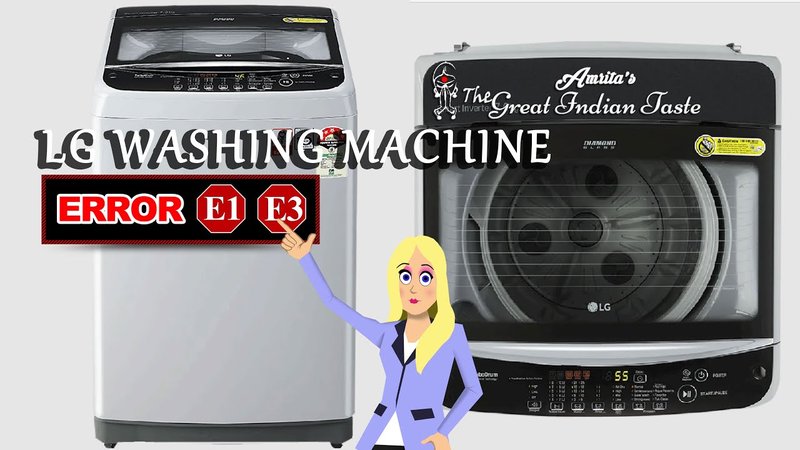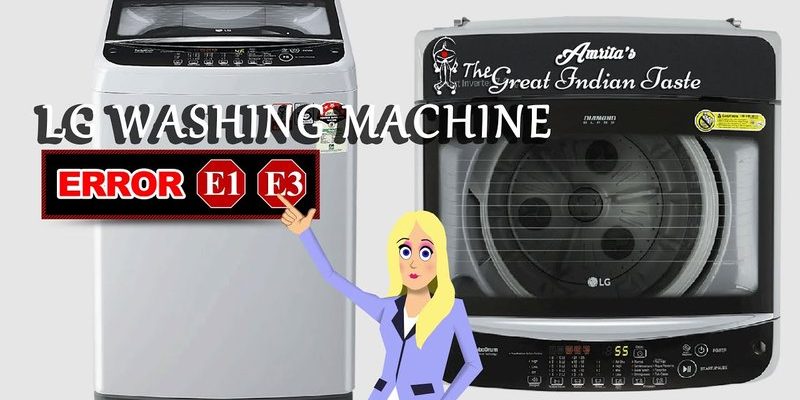
The E1 error often serves as your washing machine’s way of waving a red flag. Essentially, it indicates a water supply issue, much like when you turn on a faucet but only a trickle comes out. Your washing machine relies on a good flow of water to operate properly, and when this is disrupted, it can’t perform its duties effectively. Letting this issue linger is akin to ignoring a slow drip under your sink—you might not see immediate damage, but trust me, it could end up costing you way more in the long run.
Understanding the E1 Error in LG Washing Machines
First off, it’s important to understand what the E1 error message is trying to tell you, as this is the key to figuring out the next steps. This error typically pops up when your machine detects a problem with water supply. Think of it like your washing machine is trying to fill up a tub and it’s not happening fast enough because of some blockage in the pipes.
Usually, the E1 error is related to issues like clogged water inlet filters or hoses—imagine trying to drink a thick milkshake through a narrow straw. It’s not going to be efficient, and it’s certainly frustrating. In some cases, it might also be due to a faulty water inlet valve, which is akin to a clogged faucet that can’t deliver water properly. If you’ve ever tried to water your garden with a kinked hose, you’ll know exactly what this feels like!
Addressing the root cause can sometimes be as simple as cleaning out the filters or straightening a kinked hose. However, if left unresolved, these small issues can compound into bigger problems like reduced machine efficiency, increased utility bills, or even complete mechanical failure over time.
Consequences of Ignoring the E1 Error
So, what happens if you just ignore the E1 error? Here’s the deal: it’s not just about a minor inconvenience. If you let this error persist, you’re essentially allowing your machine to operate under stressed conditions, which can lead to decreased longevity of your appliance. Imagine running a car with a flat tire—it might move for a while, but it’s not going to go the distance, and you’re in for a bumpy ride.
Furthermore, a washing machine that isn’t filling with water properly can’t clean clothes effectively. So, not only might you end up with damp clothes, but they could also be dirty, despite going through a full cycle. This results in wasted water and energy—two resources that none of us can afford to squander.
Another potential consequence is water damage. Yes, in some cases, excessive stress on the internal components can result in leaks, which can lead to damage to your floors or surrounding areas. It’s a situation that quickly escalates from one error code to an expensive repair bill.
How to Fix the E1 Error and Prevent Future Issues
You might be wondering, how can you avoid the trouble of ignoring the E1 error? The good news is, there are straightforward steps you can take to fix it and maintain your washing machine’s happy life. First, ensure that your water supply is turned on fully and that the inlet hoses are not kinked or trapped. A kinked hose can choke the flow of water, much like trying to breathe through a pinched straw.
Next, check the water inlet filters for any clogs or debris. These can often be cleaned with a simple rinse, much like cleaning a reusable coffee filter. If the problem persists, it might be time to inspect the water inlet valve itself and consider a replacement if it’s faulty. For those less comfortable with DIY fixes, contacting a professional technician can be a stress-free option.
Ultimately, regular maintenance is key. Routinely check hoses and filters, and give your machine a little TLC with a maintenance wash now and then. By keeping an eye on these small details, you’ll save yourself from the larger headaches down the road and ensure that your washing machine serves you well for years to come.
